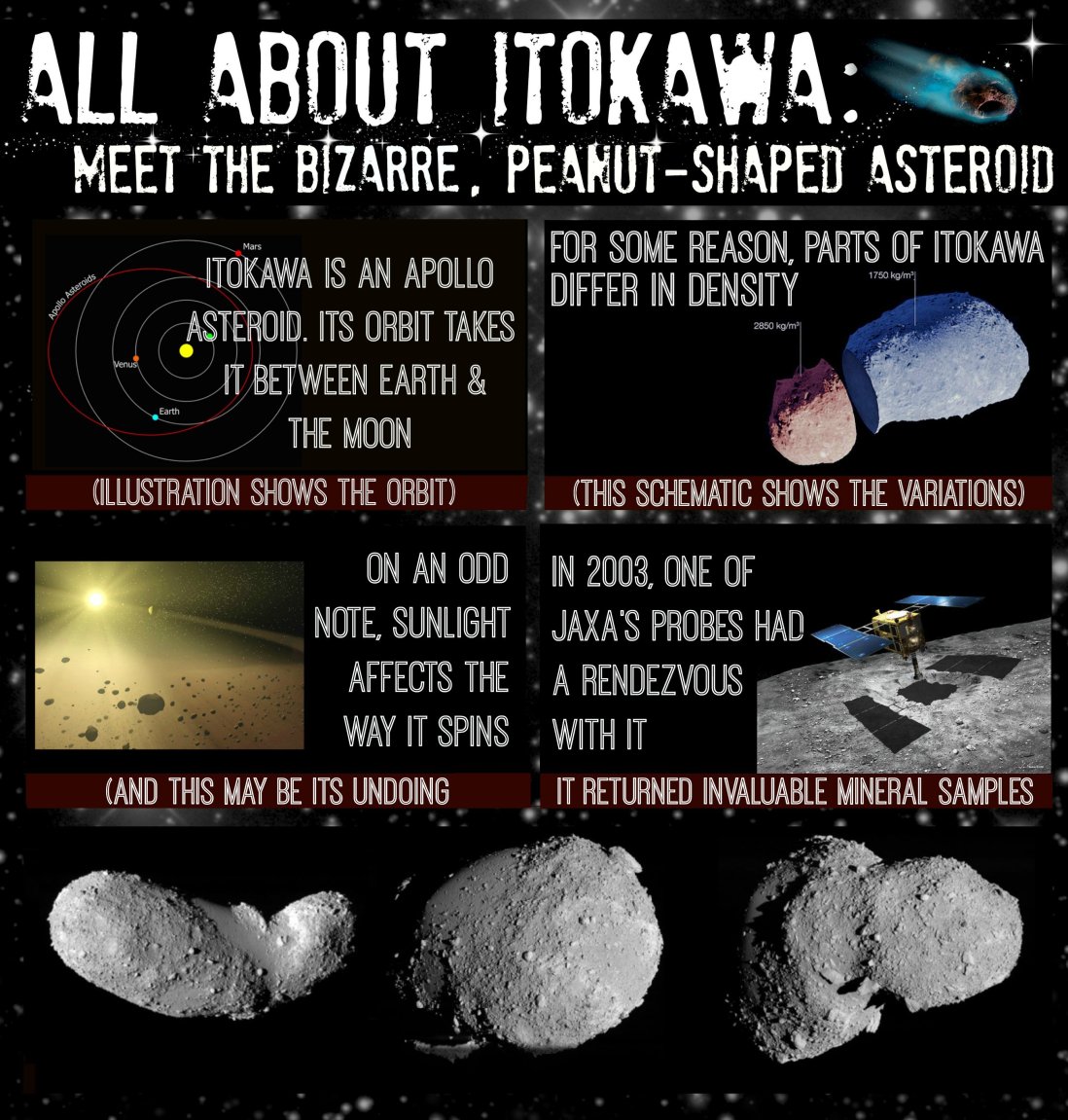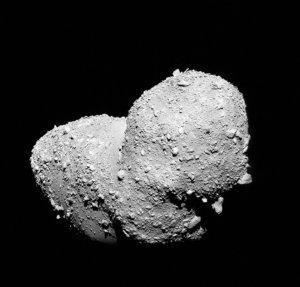

What’s the first thing that comes to mind when you think of an asteroid? For most of us, the last thing we would think of would be a peanut. However, recent observations by the ESO and JAXA show the asteroid Itokawa has a unique peanut shape. With the help of the New Technology Telescope (NTT), astronomers have discovered that this simple space peanut is more complex than originally thought.
A PEANUT DISSECTED:
When we look at a peanut, whether it is a styrofoam peanut, an actual peanut, or a space peanut, the very basic physical properties are the same; a peanut is separated into two distinct halves. What makes Itokawa so unique is the different parts have different densities. Astronomers gathered images captured by the NTT from 2001-2003 and Japan’s Hayabusa in 2005 in order to measure changes in Itokawa’s brightness as it rotated. The asteroid’s spin and how it changed over time was precisely measured from this data. The calculations were combined with the asteroid’s strange peanut shape, indicating it harbored an extremely complex interior. This discovery is a HUGE step towards understanding how these (and other) rocky bodies form.
THE YORP EFFECT:

The spin of asteroids and other small bodies can be altered by sunlight – an effect known as the YORP (Yarkovsky-O’Keefe-Radzievskii-Paddack) Effect. It’s a cycle – asteroids absorb light from the Sun, and in turn give off heat energy. The irregular shape of asteroids like Itokawa prevents the heat from being emitted evenly, producing a tiny torque which alters the spin rate. A team of astronomer’s measured the YORP Effect on Itokawa’s spin and calculated the change to only be 0.045 seconds per year. This calculation was not expected and the only explanation for such a miniscule change is due to the density difference in Itokawa’s anatomy.
This is the very first evidence astronomers have illustrating the highly complex innards of an asteroid. Such a rare glimpse inside an asteroid raises questions about how these complex rocky bodies form. One strong hypothesis is that asteroids like Itokawa form by merging and colliding with other asteroids; thus explaining the different densities. Our new found ability to delve into the inner workings of asteroid will provide new understanding of these mysterious rocky bodies.
Want to read more? Check out the official press release here.